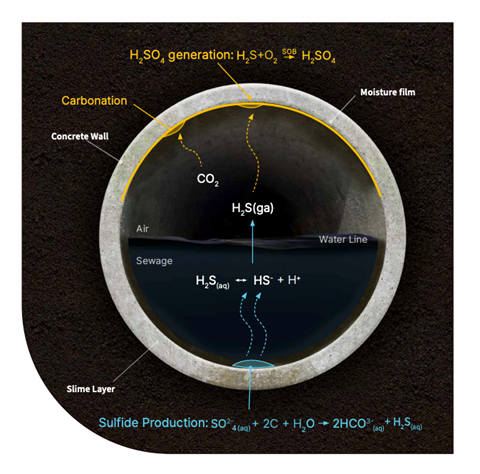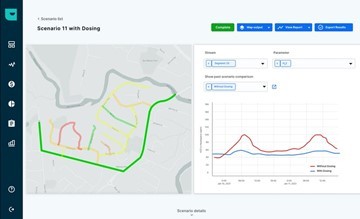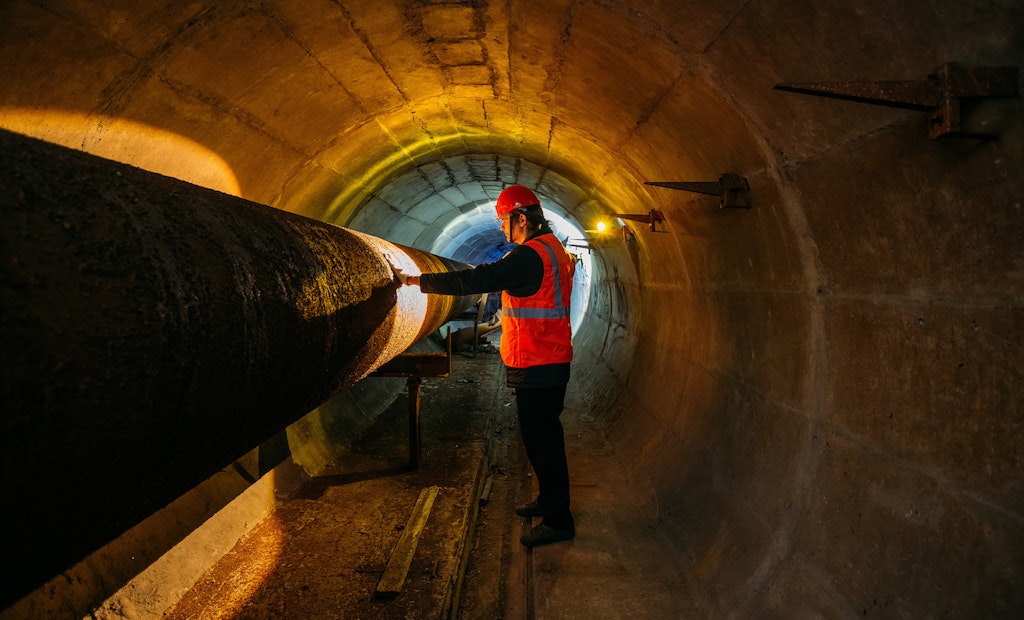Interested in Infrastructure?
Get Infrastructure articles, news and videos right in your inbox! Sign up now.
Infrastructure + Get AlertsIntermittent flows in rising mains often lead to long sewage retention times under anaerobic conditions, allowing the growth of sulfate-reducing bacteria that convert sulfate to sulfide. In gravity mains, under turbulent conditions, dissolved sulfide passes from the liquid to the gas phase as H2S, resulting in unpleasant odors if emitted to the external environment. Also, under humid conditions H2S may be oxidized to sulfuric acid on the upper surface of the sewer pipe, causing corrosion.
Corrosion in sewer systems costs the world billions in repairs and replacements. A single unexpected failure due to corrosion can cost a water utility millions. Odor monitoring and control systems cost millions to implement but can still lead to persistent problems with nearby communities, costing massive amounts of time and money to manage on an ongoing basis.
Unless air or oxygen is deliberately injected to control sulfide, rising main sewers typically provide optimal conditions for methane generation. This can present a significant safety risk and be an important contribution to greenhouse emissions.
What type of sewer networks are susceptible to early corrosion or high septicity?
1. Large diameter pipes (>1m) of greater than 2km in length
2. Smaller diameter rising mains (<250mm) of greater than 2km in length
3. Low or intermittent flows (e.g. <10 times per day)
Networks with these characteristics don’t always have problems. Corrosion and odor sometimes occur unexpectedly and a dynamic comprehensive understanding of the sewer network is critical.
The problems with traditional methods of management
Methods of control are established based on assumed flows and network conditions. Corrosion risk in sewer networks is typically represented based on many assumptions on the current state of the network or simple storage and display of monitoring devices. Corrosion issues are often only discovered when costly assets fail, well before the expected life of the equipment.
Significant odor incidents can occur without warning, causing significant nuisance in the community and disruption to the effective management of the network. Traditional methods of management focus on responding to complaints and identifying the source of the issue can be very difficult after the incident has passed. Odor management is further complicated as it is based on a subjective response of the human nose, and it can be difficult to prove with any confidence whether the sewer network has not been the cause of any particular issue.

What is SeweX?
SeweX is based on an advanced mathematical model that describes the physical, chemical and biological processes in sewers.
SeweX has integrated complex models used to represent sulfide and methane generation in sewer networks into a solution that can be used by decision makers to:
- Quickly and easily identify major cost savings in the design of a network
- Pinpoint the source of pollution events in real time
- Make operational and design decisions to avoid corrosion, odor and safety issues
- Identify corrosion and odor risk priority areas quickly and predict the outcome of different operating scenarios to solve those issues
The key factors affecting sulfide production in sewers are the concentration of organic matter, flow velocity, pipe size and length, temperature, sulfate concentration and the presence of oxygen and nitrate. The sewer environment is highly dynamic in terms of both flow and sewage composition, resulting in highly dynamic sulfide levels in the pipes.
The model uses sewer network configuration, pipe geometry, wastewater characteristics and hydraulic data as inputs and predicts both the temporal and spatial variations of wastewater composition, including sulfate, sulfide and methane in sewers.
The SeweX model is used to compare different odor and corrosion control options to develop a tailored, cost-effective mitigation strategy by determining the optimal chemical dosing locations and rates to suit the need of a particular sewer network.
Real-time operational data can be taken from the existing monitoring network or can be deployed by one of Envirosuite’s recommended hardware partners. The product operates in the cloud and can be accessed via a login and password from the control room, a pc or mobile device.

EVS Water SeweX is a cloud-based platform that helps sewer operators identify, respond and manage safety, corrosion and odor risks across entire municipal sewer networks.
A real-time software platform to act on odor, corrosion and safety risks across municipal sewer networks
EVS Water SeweX is a cloud-based platform that helps sewer operators identify, respond to and manage safety, corrosion and odor risks across entire municipal sewer networks. Market alternatives offer only simple storage and display of monitoring information. SeweX provides rapid understanding of risk as it develops and supports science-based decision making for making the best short-term and long-term decisions for improvement.
Learn more about SeweX here: envirosuite.com/platforms/water/sewex






